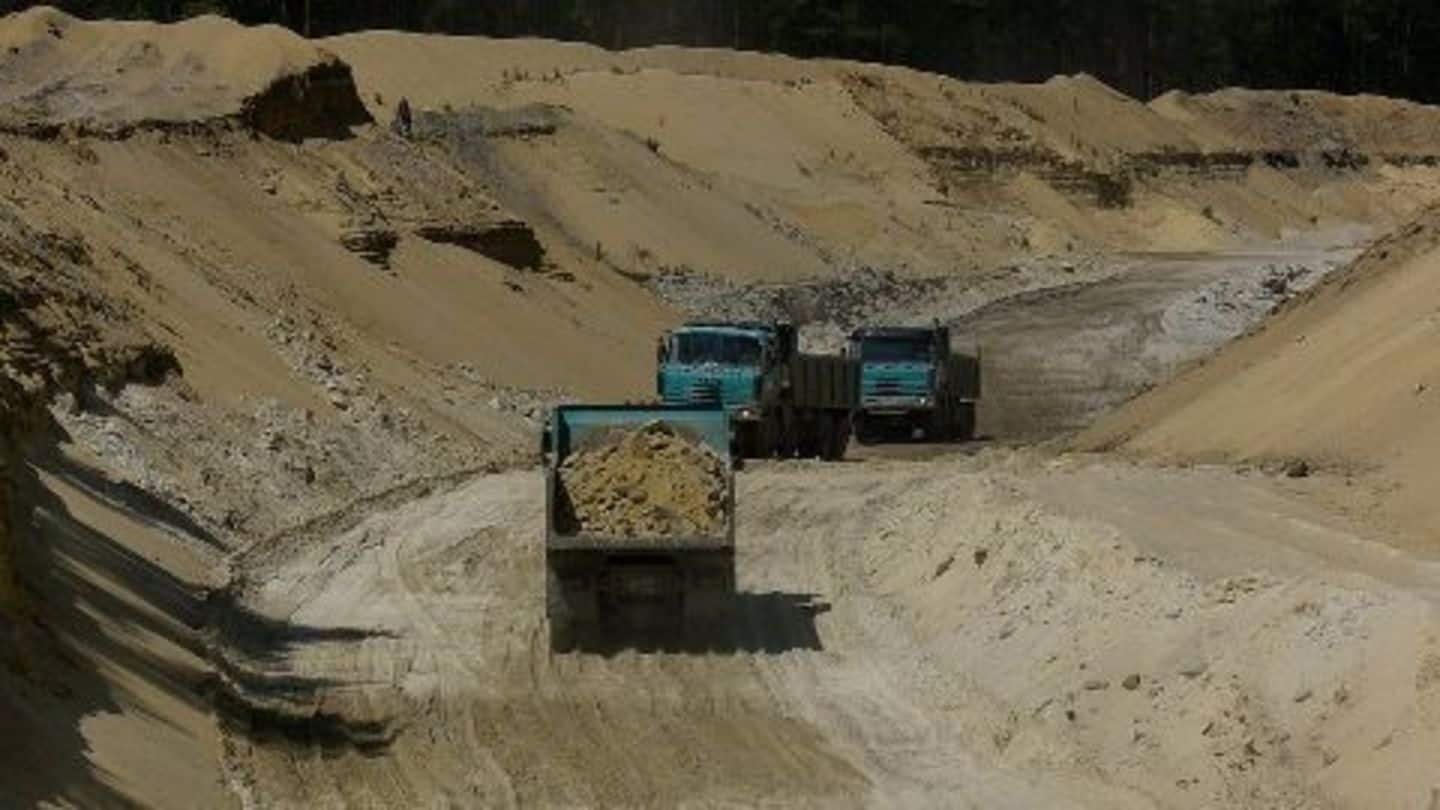
New mining norms for minor minerals, ECs decentralized
What's the story
The Centre issued new mining norms and guidelines for minor minerals like sand, seeking to decentralise the Environmental Clearance (EC) processes and stop illegal mining. In a first, district committees have been empowered to grant ECs for leases up to 5 acres. IT tools would be used to track illegal miners, while transit permits for sand would be enhanced with barcodes and QR codes.
Introduction
Minor mineral mines regulations
The Mines and Minerals (Development and Regulation) Act, 1957 lists 55 minor minerals, including sand and limestone. Minor mineral mines are regulated by states, unlike major mineral mines. Till recently, minor mineral mines smaller than 5 acres were not subject to regulation. Mines over 5 acres were circumventing regulations by dividing their mine areas into smaller parcels and obtaining separate leases for them.
Information
Minor minerals key to the construction industry
Minor minerals include several minerals used in the construction industry, including building gravel, clay, sand, brick earth and road metal.
2010
MoEF report: Stringent laws for minor mineral mining
A core group was constituted by MoEF to look into the environmental implications of mining of minor minerals. In 2010, the group presented its report, stating that mines of minor minerals needed to be monitored in the same way as major mineral mines were monitored. The group recommended no longer exempting leases of 5 acres from mining regulations and making mine plans mandatory.
27 Feb 2012
ECs made compulsory for all minor mineral mines
The Supreme Court directed states and UTs to implement strict regulations to monitor minor minerals, including obtaining Environmental Clearances (ECs) for all minor mining leases. As recommended by MoEF, ECs were also made mandatory for 5-acre leases. SC directed all states to enforce other recommendations made by MoEF, including setting up a corpus fund for rehabilitation of abandoned mines.
Information
Environmental implications of minor mineral mining
MoEF stated in its report that indiscriminate sand, as well as other mineral mining, had damaged lakes, riverbeds and groundwater. Sand mining had also had adverse impact on biodiversity and river banks.
6 Feb 2015
31 major minerals notified as minor minerals
The centre identified 31 major minerals such as chalk and shale as minor minerals, bringing them under the state governments' purview. The decision would enable states to factor local conditions while regulating these minerals, that account for 55% of the leases and 60% of leased area. The move followed the new policy of decentralization of mining regulations to expedite the country's mineral development.
24 Sep 2015
Centre releases draft notification on minor mineral mining policy
The centre released a draft notification for its new policy on sustainable minor mineral policy. According to the draft, remote sensing and field mapping would be used to determine feasible sites for sand mining. Mined material would be monitored strictly from source to destination using barcodes and other IT tools. Leases over 5 acres would be able to obtain ECs at the district level.